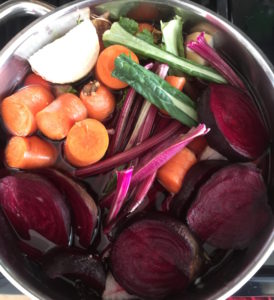Yoga Practice: How To Make It Pleasant

Yoga practice can be a life-transforming experience. It can recharge your body, mind, heart and soul with new refreshing energies and gently bring all aspects of your being into a state of balance. The practice can include doing poses (asanas), pranayama (deep breathing), meditation and deep restorative rest.
There is one requirement for these amazing benefits to happen: the practice has to be regular. The word “regular” could mean different ideas to different people, and I encourage you to ponder and define it for yourself. At least, if you come back to the mat somewhat consistently, then you can start feeling and noticing positive changes.
No doubt, Yoga is becoming more popular. More studios and styles are popping up. Many of us have tried at least one community Yoga class or tried practicing at home. I attended several Yoga teacher trainings and have been teaching Yoga for the community and private clients for eight years. Following my inner calling, I established my own home Yoga practice more than two decades ago and would like to share some insights with you.
So, what makes a Yoga class a great experience? What helps you as a Yoga practitioner, whether you are a complete novice or a seasoned student, experience a feeling of lightness, recharge, emotional freedom, mental clarity and happiness during and after a Yoga class? Let me attempt to sum up the key points here for you:
1. Know Thyself.
Throughout your Yoga practice, stay aware of your body’s capabilities and limitations. Accept what you can do in a moment and let go of any comparisons and expectations. Try not to force yourself into the “perfect Yoga image” in your mind. The body may feel very different on different days. Be grateful to your body and its abilities.
2. Breathe.
Stay focused on your breath and invite your breath deep into your belly and the tiniest parts of your lungs. Breathe as slowly and as fully as you comfortably can. Notice the rhythm, temperature, pattern, length, and smoothness of your breath and allow it to become more relaxed. Practicing on an empty stomach or two to three hours after your last intake of foods and beverages helps relax the chest and abdominal muscles that orchestrate the breathing process.
3. Soften.
Yoga practice is a time for inner reflection and inquiry. By consciously softening and relaxing your mind and heart, you can tune into your inner being more fully. Mental activities such as thinking, planning, and solving problems or reviewing emotionally upsetting situations are best to deal with outside of the Yoga class, so ask your mind to wait patiently until after the end of your practice.
3. Listen to your body.
Listen to the feelings, sensations, sounds, urges, inner dialogs and other cues coming from your body. At one moment, you can notice some tightness in your back. Later, it could be a sense of release in your shoulders or neck or a feeling that you need to come out the pose sooner. Observe your body going through the experience of Yoga practice, stay gentle with yourself and respect your inner messages.
The last but not least: before you begin attending Yoga classes in the community or practicing at home, visit your health provider, review your medical history together and decide which type of Yoga practice might be your best fit. Keep your health team updated on any changes in your well-being.
As a general rule, gentle and restorative Yoga practices can be suitable for many different bodies. When you approach your Yoga practice with awareness, your own body will “speak to you” and teach you which poses, techniques and styles work the best for you at any given moment.
I wish you safe and pleasant Yoga experiences! Namaste.
In Health,
Nataliya
Bibliography:
Iyengar, B.K.S. (1976). Light on Yoga. Schoken Books: New York
Sivananda Yoga Vedanta Center. (2008). Yoga: Mind and Body. DK: New York
 Today I’m excited to share with you how easy it is to make your own vegetable broth.
Today I’m excited to share with you how easy it is to make your own vegetable broth.

 A Heat Wave on a Labor Day Weekend in San Francisco Bay Area
A Heat Wave on a Labor Day Weekend in San Francisco Bay Area